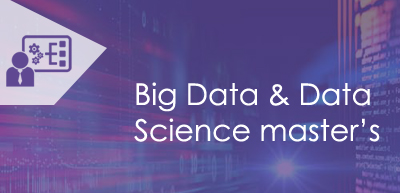<
DevOps Certification Training Course in Melbourne
Flexible Schedule
60 Hrs Project Work & Exercises
30 Hrs Instructor Led online Training
33 Hrs Self-paced Videos
24X7 Support
Certification and Job Assistance
Enquire Now
Overview
- Fundamentals of DevOps implementation
- In-depth study of key DevOps processes and methodologies
- Managing software version control and build management
- Tracking performance metrics and DevOps success factors
- Deploying Infrastructure as a Code
- Improving workflow between developers and operations
- Automating server virtualization
- Managing application containerization with Kubernetes
- IT Developers and IT Operations Personnel
- Software Automation, Testing and Security Professionals
- DevOps Consultants and Stakeholders
- A basic knowledge of Linux or scripting is good to have. For this, we provide you with a free Linux self-paced course to help speed up your learning.
- A prior IT experience would be necessary for learning this technology.
What you will gain?
- 1 to 1 Live Online Training
- Dedicated 24 x 7 Support
- Flexible Class Timing
- Training Completion Certification
- Direct Access to the Trainer
- Lifetime Access of an LMS
- Real-time Projects
- Dedicated Placement Support
Fees
Self Paced Training
13,052
Online Live One to One Training
22,740
Course Content
- 1.1 EC2 Walkthrough
- 1.2 Installation of DevOps Tools on cloud
- Git
- Docker
- Selenium
- Maven
- Jenkins
- Puppet
- Ansible
- Kubernetes
- Nagios
- 2.1 What is Software Development
- 2.2 Software Development Life Cycle
- 2.3 Traditional Models for SDLC
- 2.4 Why DevOps?
- 2.5 What is DevOps?
- 2.6 DevOps Lifecycle
- 2.7 DevOps Tools
- 3.1 What is Continuous Testing?
- 3.2 What is Maven?
- 3.3 Running Test Cases on Chromium Web Driver
- 3.4 What is Headless Mode?
Hands-on Exercise –
- Using Maven to import dependencies in Eclipse
- Implementing a headless test using Chrome WebDriver.
- 4.1 Introduction to Continuous Integration
- 4.2 Jenkins Master Slave Architecture
- 4.3 Understanding CI/CD Pipelines
- 4.4 Creating an end to end automated CI/CD Pipeline
Hands-on Exercise –
- Creating a Jenkins Master Slave on AWS
- Installing Plug-ins in Jenkins
- Creating Jenkins Builds
- Creating Scheduled Builds
- Triggering Jobs using Git Web Hooks
- Using the Pipeline Plugin In Jenkins
- 5.1 What is Version Control
- 5.2 Types of Version Control System
- 5.3 Introduction to SVN
- 5.4 Introduction to Git
- 5.5 Git Lifecycle
- 5.6 Common Git Commands
- 5.7 Working with Branches in Git
- 5.8 Merging Branches
- 5.9 Resolving Merge Conflicts
- 5.10 Git Workflow
Hands-on Exercise –
- Git Life cycle Commands
- Pushing Code to Github
- Stashing Code in git
- Creating, Deleting Git Branches
- Reverting a Push to GitHub
- Merging branches using git merge
- Merging branches using git rebase.
- Resolving merge conflicts using git merge tool
- 6.1 Introduction to Docker
- 6.2 Understanding Docker Lifecycle
- 6.3 Components of Docker Ecosystem
- 6.4 Common Docker Operations
- 6.5 Creating a DockerHub Account
- 6.6 Committing changes in a Container
- 6.7 Pushing a Container Image to DockerHub
- 6.8 Creating Custom Docker Images using Dockerfile
Hands-on Exercise –
- Common Docker Operations
- Creating a DockerHub Account
- Committing Changes to a Container
- Pushing container to DockerHub
- Creating Local Image Repository
- Building an Image using Dockerfile
- 7.1 What are Docker Volumes
- 7.2 Deploying a Multi-Tier Application using Docker Network
- 7.3 Using Docker Compose to deploy containers
- 7.4 What is Container Orchestration
- 7.5 Container Orchestration Tools
- 7.6 Introduction to Docker Swarm
- 7.7 Deploying a 2-Node Cluster using Docker Swarm
Hands-on Exercise –
- Creating Docker Volumes
- Using Docker Compose to deploy multiple containers
- Deploying a Multi Node Cluster using Docker Swarm
- Deploying a multi-service app on Docker Swarm
- 8.1 Need of Configuration Management
- 8.2 Configuration Management Tools
- 8.3 What is Puppet
- 8.4 Puppet Architecture
- 8.5 Setting up Master Slave using Puppet
- 8.6 Puppet Manifests
- 8.7 Puppet Modules
- 8.8 Applying configuration using Puppet
- 8.9 Puppet File Server
Hands-on Exercise –
- Setting up Master Slave on AWS
- Testing Connection of nodes with Puppet
- Creating a Manifest
- Deploying Manifest on Node
- Creating a Module
- Deploying sample software on nodes using Puppet Modules and Manifests
- Implementing a File Server Module on Puppet
- 9.1 What is AWS Lambda
- 9.2 How Lambda is different from EC2
- 9.3 Benefits and limitations of Lambda
- 9.4 How does Lambda work
- 9.5 Use cases of Lambda, Lambda concepts
- 9.6 Integration S3 with Lambda
- 9.7 What is Elastic Beanstalk, how does Beanstalk work, Beanstalk concepts, Beanstalk pricing
- 9.8 What is configuration management
- 9.9 What is AWS OpsWorks, AWS OpsWorks benefits
- 9.10 CloudFormation vs OpsWorks, services in OpsWorks, AWS OpsWorks Stacks, OpsWorks pricing.
Hands-on Exercise –
- Creating a Lambda function
- Setting up Lambda triggers and destinations
- Creating an Elastic Beanstalk application
- Uploading a new version of the application to Beanstalk
- Creating a stack in OpsWorks
- Launching the instance using OpsWorks and automatically installing the application.
- 10.1 Introduction to Kubernetes
- 10.2 Docker Swarm vs Kubernetes
- 10.3 Kubernetes Architecture
- 10.4 Deploying Kubernetes using Kubeadms
- 10.5 Alternate ways of deploying Kubernetes
- 10.6 YAML Files
- 10.7 Creating a Deployment in Kubernetes using YAML
- 10.8 Services in Kubernetes
- 10.9 Ingress in Kubernetes
- 10.10 Case Study – Kubernetes Architecture
Hands-on Exercise –
- Setting up Kubernetes using kubeadm
- Installing Kubernetes using kops and GCK
- Creating a Deployment
- Creating Services
- Creating an Ingress
- Demonstrating the use of Ingress, services and deployments together
- 11.1 What is Continuous Monitoring
- 11.2 Introduction to Nagios
- 11.3 Nagios Architecture
- 11.4 Monitoring Services in Nagios
- 11.5 What are NRPE Plugins
- 11.6 Monitoring System Info using NRPE plugins
Hands-on Exercise –
- Installing Nagios
- Monitoring of different servers using Nagios
- 12.1 What is Infrastructure as a code
- 12.2 Iac vs Configuration Management
- 12.3 Introduction to Terraform
- 12.4 Installing Terraform on AWS
- 12.5 Basic Operations in terraform
- init
- plan
- apply
- destroy
- 12.6 Terraform Code Basics
- 12.7 Deploying and end-to-end architecture on AWS using Terraform
Hands-on Exercise –
- Installing Terraform
- Initializing AWS Terraform Provider
- Creating an EC2 instance using Terraform
- Updating changes to EC2 using Terraform
- Destroying EC2 using Terraform
- Deploying EC2 inside a custom VPC using Terraform
Benefits of Online Training
- 100% Satisfaction Ratio
- Dedicated Help In Global Examination
- Updated Syllabus & On-Demand Doubt Session
- Special Group & Corporate Discounts

FAQ’s
This training equips you with skills to apply for some of the best jobs in top MNCs around the world at top salaries. ZebLearn offers lifetime access to videos, course materials, 24/7 learning support and free upgrade to course material to the latest version at no extra fee. Hence, it is clearly a one-time investment.
You would be glad to know that you can contact ZebLearn support even after the completion of the training. We also do not put a limit on the number of tickets you can raise for query resolution and doubt clearance.
You will work on highly exciting projects in the domains of high technology, ecommerce, marketing, sales, networking, banking, insurance, etc. After completing the projects successfully, your skills will be equal to 6 months of rigorous industry experience.
Job Opportunities
As businesses are embracing DevOps for the speedy delivery of software features and security updates, your career as a DevOps engineer has excellent prospects for growth
DevOps can play a vital role here. With the continuous security philosophy, DevOps can enable seamless security integration to allow the development teams to develop secure software code faster than before. DevOps continuous security ensures testings are done along the development lifecycle and not at the end of it.
Placement Partner



